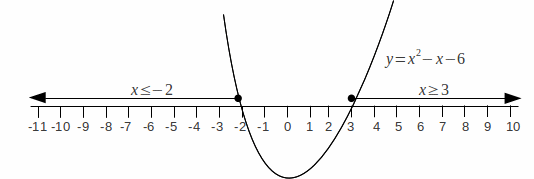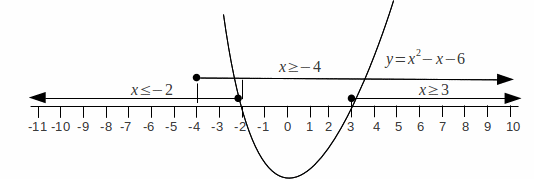Solving simultaneous inequalities is not the same as solving simultaneous equations. Simultaneous equations (in![]() and
and![]() ) give rise to a set of points. If one equation is linear and the other is quadratic, there are either no points, one point or two points, each of the form
) give rise to a set of points. If one equation is linear and the other is quadratic, there are either no points, one point or two points, each of the form![]() Simultaneous inequalities give rise to ranges of
Simultaneous inequalities give rise to ranges of![]() values.
values.
The simplest inequalities are linear. Suppose we have that![]() and
and![]() Showing these inequalities on a number line gives the diagram below. The black circles indicate x may take the values -3, -2 or 1. If
Showing these inequalities on a number line gives the diagram below. The black circles indicate x may take the values -3, -2 or 1. If![]() then
then![]() may not take the value -2 and this would be indicated by a hollow circle.
may not take the value -2 and this would be indicated by a hollow circle.

The set of![]() values satisfied by both inequalities is those parts of the
values satisfied by both inequalities is those parts of the![]() – axis 'covered' by both inequalities i.e.
– axis 'covered' by both inequalities i.e.![]()
If one inequality is a quadratic our task is slightly harder. Suppose we have![]() and
and![]()
Factorising the quadratic gives and equating to 0 gives![]() so that
so that![]() or
or![]() We can sketch the quadratic to give the graph below.
We can sketch the quadratic to give the graph below.

We want those values of![]() for which
for which![]() – those values of
– those values of![]() for which the graph is above or on the
for which the graph is above or on the![]() – axis. These are shown below.
– axis. These are shown below.

Adding to the diagram the inequality![]() gives the diagram below.
gives the diagram below.

The set of![]() values covered by both is
values covered by both is![]() and
and![]()
